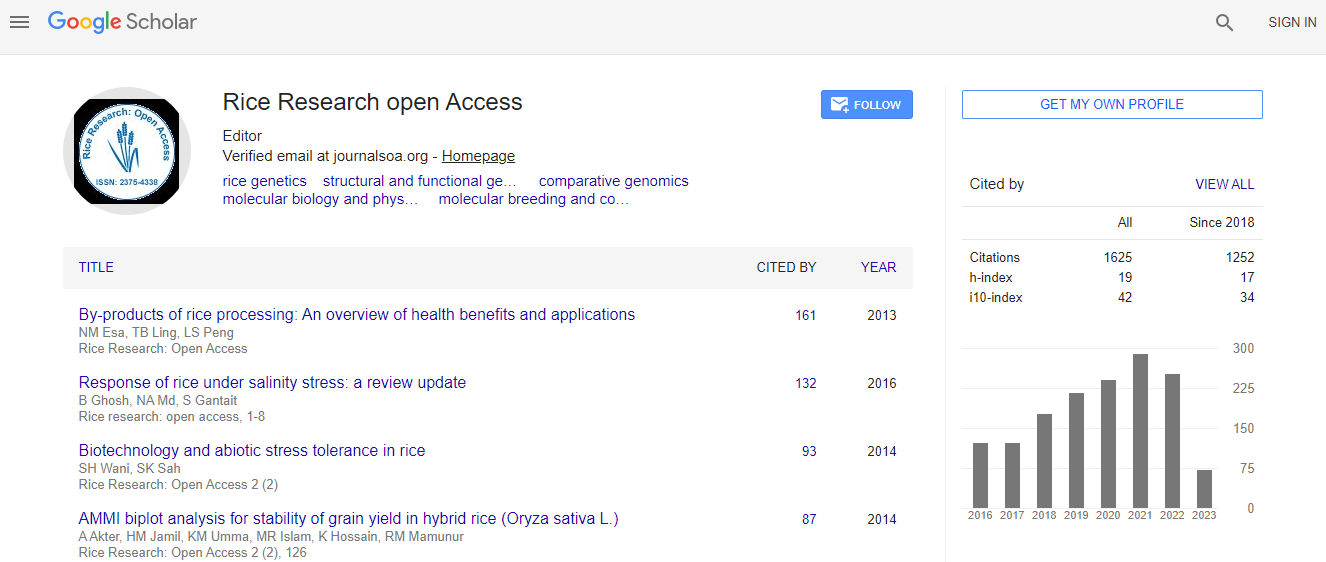Research Article
Effect of Cold Storage, Reheating, and Particle Sizes on In Vitro Glucose Release and Starch Digestibility among Five Rice Products in Auckland, New Zealand
Lu LW1*, Monro J2, Lu J3 and Rush E11School of Sport and Recreation, Auckland University of Technology, Auckland, New Zealand
2The New Zealand Institute for Plant and Food Research, Palmerston North, New Zealand
3School of Applied Science, Auckland University of Technology, Auckland, New Zealand
- Corresponding Author:
- Lu LW
Faculty of Health and Environmental Science
Auckland University of Technology
Private Bag 92006, Auckland 1142, New Zealand
Tel: 00 64 9 921 999, Ext: 7295
Fax: 00 64 29 921 9960
E-mail: lolu@aut.ac.nz
Received Date: March 20, 2016; Accepted Date: July 28, 2016; Published Date: August 05, 2016
Citation: Lu LW, Monro J, Lu J, Rush E (2016) Effect of Cold Storage, Reheating, and Particle Sizes on In Vitro Glucose Release and Starch Digestibility among Five Rice Products in Auckland, New Zealand. J Rice Res 4:171. doi:10.4172/2375-4338.1000171
Copyright: © 2016 Lu LW et al. This is an open-access article distributed under the terms of the Creative Commons Attribution License, which permits unrestricted use, distribution, and reproduction in any medium, provided the original author and source are credited.
Abstract
Rice provides more than 27% of daily energy intake to more than half of the world’s population. Refined and cooked rice, as a staple has been generally perceived to induce high glycaemic responses; however, it is known that cold storage of cooked rice, reheating, and mincing or chewing affects the rate and extent of starch digestion and glucose release. This in vitro experimental study aimed to investigate the effect of various combinations of these factors on the rate and extent of starch digestion of five rice products, medium grain white, medium grain brown, long grain white, basmati, and parboiled rice. Cold storage (at 4ºC) for over ten hours significantly reduced digestibility of cooked rice starch (P=0.05). The reductions in starch digestion were dependent on the type of rice product varieties (medium grain white, medium grain brown, and long grain brown about 20% (P=0.05); basmati about 30% (P=0.05); and parboiled about 40% (P<0.001). Reheating (65ºC for 15 minutes) and mincing increased starch digested by 20% (P<0.001) and 18% (P<0.001) respectively compared with the cold-stored un-minced cooked rice. The glucose released from minced freshly cooked medium grain white rice reached over 90% after 40 minutes of digestion while 24-hour cold-stored minced parboiled rice had the lowest, reaching around 40% after 180 minutes. Further study with human participants is suggested to analyse the significance of the differences between medium grain white rice and cold stored parboiled rice, for the purpose of investigating if the optimal treatment of parboiled rice (cold storage at 4ºC for 24 hours), with appropriate food safety precautions (reheating to 65ºC for at least 15 minutes), could be a public health recommendation that would improve the postprandial blood glucose response compared with the response to the more popular medium grain white rice.

 Spanish
Spanish  Chinese
Chinese  Russian
Russian  German
German  French
French  Japanese
Japanese  Portuguese
Portuguese  Hindi
Hindi 
